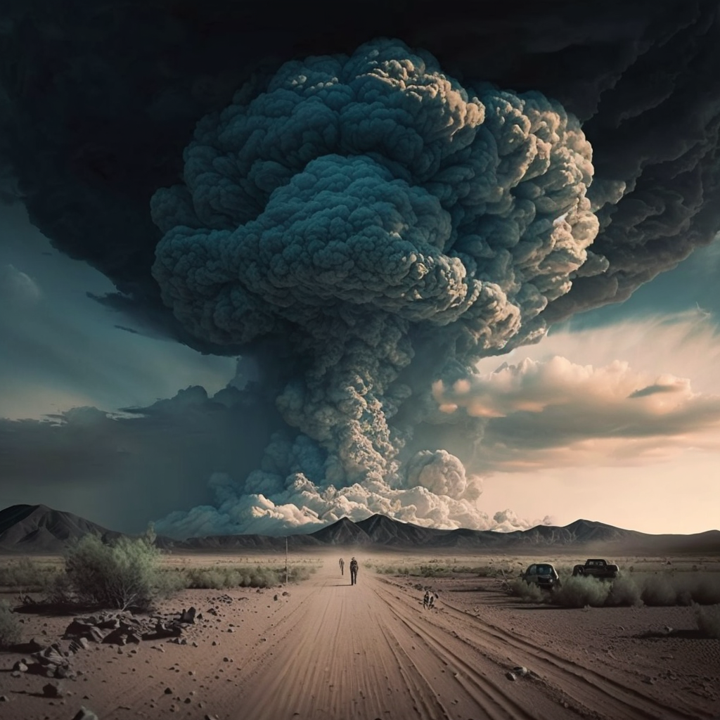In einem Beitrag hat das Schweizer Fernsehen suggeriert, mittels Batterien sei das Speicherproblem der Energiewende zu lösen. Alex Reichmuth hat im Nebelspalter daraufhin eine Modellrechnung vorgenommen, die zeigt, dass diese Vorstellung nie und nimmer der Realität entspricht (https://www.nebelspalter.ch/themen/2025/05/batterien-werden-die-energiewende-nicht-retten).
Reichmuths Faktencheck
Batterien werden die Energiewende nicht rettenDie Ausgangslage: Die SRF«Tagesschau» suggerierte letzte Woche dem Publikum, mit Batterien könne das Speicherproblem der Energiewende gelöst werden. Im Beitrag forderte die Aargauer SP-Nationalrätin Gabriela Suter eine «nationale Speicherstrategie», die Batterienspeicher einbezieht.
Warum das wichtig ist: Wenn künftig ein grosser Teil des Stroms von Solaranlagen und Windrädern kommen soll, wird wetterbedingt immer wieder ein grosser Teil an Elektrizität fehlen. Vor allem mangelt es im Winter an Strom, weil Solarpanels in der kalten Jahreszeit kaum Energie produzieren. Es sind darum dringend Lösungen gefragt, um überschüssige Ökoenergie für Zeiten mit Strommangel speichern zu können. Die Schweiz hat zwar Speicherkraftwerke in Form von Stauseen, doch diese reichen bei weitem nicht aus. Ist es richtig, dass der Bau von Batterien das Speicherproblem der Energiewende lösen könnte?
Den ganzen Beitrag gibt es im Nebelspalter (https://www.nebelspalter.ch/themen/2025/05/batterien-werden-die-energiewende-nicht-retten). Der Beitrag kann nach 20 Sekunden Werbung freigeschaltet werden.
+++
Volcanic eruption in Tonga sent seawater into the atmosphere and sulfur into the sea, study reveals
Volcanoes erupting underwater have a distinctive effect on the climate that is larger and more widespread than previously thought, according to an international group led by University of Auckland and Tongan scientists. Research on Tonga’s devastating 2022 Hunga eruption has just been published in the journal Nature Geoscience.
„Submarine volcanism has previously been overlooked in global climate studies, because there is typically not much atmospheric sulfur dioxide released,“ says Professor Shane Cronin, a co-lead author of the study with postdoctoral fellow Dr. Jie Wu.
However, while sulfur dioxide can lead to significant climate effects, so too can water vapor.
At its peak, Hunga’s eruption injected up to 3 billion tons of steam into the atmosphere in a single hour, with the water vapor reaching the stratosphere and even the mesosphere more than 57 km up, Cronin says.
„The eruption has been shown by several recently published studies to have cooled the Southern Hemisphere and caused a range of other atmospheric and climate impacts that we are still discovering,“ he adds.
Hunga had the potential for a global impact from sulfur dioxide. The team estimates 20 million tons of it was released during the eruption, however, most of the sulfur went directly into seawater at depths between 300 m and 1,100 m.
Cronin is at the School of Environment at Waipapa Taumata Rau, University of Auckland, while Wu is now based at the University of Otago.
University of Auckland staff and students have been working with Tongan partners to understand the wider implications of submarine volcanism in the southwestern Pacific in the aftermath of Hunga, the largest eruption witnessed in the modern era.
„We are striving to understand the broader hazards of submarine volcanism, including tsunami and damage to shorelines and internet data cables as well as how these eruptions affect our environment and climate,“ says Cronin.
Paper: Jie Wu et al, Low sulfur emissions from 2022 Hunga eruption due to seawater–magma interactions, Nature Geoscience (2025). DOI: 10.1038/s41561-025-01691-7
+++
Abrupt climate fluctuations in Tibet as imprints of multiple meltwater events during the early to mid-Holocene
A recent study published in the journal Science Bulletin was led by Dr. Shugui Hou (Nanjing University and Shanghai Jiao Tong University) and Dr. Hongxi Pang (Nanjing University). Shugui Hou drilled an ice core with a length of 127.8 m from the Zangser Kangri (ZK) ice cap in the central Tibetan Plateau (TP) in April 2009. The ice core was not well dated until the development of 14C dating technique at the microgram level in glacier ice in the past decade.
The isotopic compositions (δ18O and d-excess) of this core were measured with a spectroscopic water isotope analyzer at Nanjing University. Measurements of 14C were performed on the water-insoluble organic carbon extracted from carbonaceous aerosol particles trapped in ice by the Mini Carbon Dating System at the University of Bern.
The most surprising feature of the ZK ice core record is the dramatic fluctuations of δ18O and d-excess at centennial timescale during 7-9 thousand years ago (the early to mid-Holocene). „I am astonished when I first see the record,“ Hongxi says.
What reasons can cause the dramatic fluctuations of the ZK isotopic record during the early to mid-Holocene? „The large fluctuations of δ18O were unlikely caused by temperature because the magnitude of temperature change estimated by δ18O if it indicated temperature would be too large to be realistic,“ Hongxi says.
The solar activities and volcanic eruption events are important forcings for the early to mid-Holocene climate. However, the amplitude of solar variation was not particularly large during the early to mid Holocene than the rest of the Holocene.
In addition, climate variation driven by volcanic eruptions usually occurs at a timescale much shorter than centennial variations observed in the ZK isotopic record, although the Greenland ice cores reveal a great number of volcanic eruptions during 7-9 thousand years ago.
Paleoclimate records and model simulations indicate that glacial meltwater input to the Northern Atlantic during early Holocene ice-sheet decay could weaken the Atlantic Meridional Overturning Circulation (AMOC), leading to abrupt and widespread climate change, such as the widely known 8.2 ka event. After examining a wide range of paleoclimate records, Hongxi, and his colleagues found similar climate fluctuations in many existing records during the early to mid-Holocene, as observed in the ZK isotopic record.
„The most exciting is the rapid four sea-level jumps documented in other records corresponding well with the large fluctuations of the ZK isotopic record; we believe the meltwater forcing during the final stage of LIS dominated the large climate fluctuations in the early to mid-Holocene,“ Hongxi says.
„Our evidence suggests that at least four rapid meltwater discharge events might have occurred during the final stage of LIS, rather than only the 8.2 ka event previously believed. These rapid meltwater discharge events caused the fluctuations in the position of the mid-latitude westerlies and the Indian Summer Monsoon (ISM) through their impact on the strength of the AMOC, which led to very large fluctuations of the ZK isotopic record in the early to mid-Holocene because the ZK ice cap is in the transition zone between the westerlies and the ISM.“
„However, the timing, frequencies, source, and mechanisms of these rapid decay events during the last stage of LIS still require further investigation,“ Hongxi says.
The finding implies the possibility of rapid sea level rise and unstable climate in the transition zone between the mid-latitude westerlies and the ISM due to fast polar ice retreat under anthropogenic global warming. Therefore, the study has important implications for society’s planning and adaptation to future climate change.
Paper: Hongxi Pang et al, Abrupt climate fluctuations in Tibet as imprints of multiple meltwater events during the early to mid-Holocene, Science Bulletin (2023). DOI: 10.1016/j.scib.2023.12.007
+++
Gilbert Brands hat ein kritisches Buch zu den Klimawissenschaften geschrieben:
„Climatology“: Die Klimareligion unter der Lupe (Von Informationen zu Meinungen – Strukturen und Gesetzmäßigkeiten)
Climatology = Klimawissenschaft? Nein, nicht wirklich. Der Titel ist zu Lesen wie Scientology.Die Klimaänderung hat in der öffentlichen Diskussion inzwischen eher religiösen als wissenschaftlichen Charakter. Wer am CO2-Modell zweifelt, ist ein Klimaleugner, obwohl selten ein Klimawandel tatsächlich bezweifelt wird. Mit Inbrunst wird inzwischen fast alles auf dem Altar der CO2-Einsparung geopfert. Wissen ist Out, Gefühl und Glauben ist In. Kann man als interessierter Normalbürger in der Diskussion eigentlich mithalten? Oder muss man alles glauben? Sind die Behauptungen der Klimaexpterten alle wahr? Oder wird geschummelt was das Zeug hält?“3000 Wissenschaftler glauben an das CO2-Modell!“ – Glauben! Nicht wissen! Von den 3000 haben die meisten das falsche Fachgebiet gelernt: Politologie, Soziologie oder vergleichende Theaterwissenschaft. Und die wenigen wirklichen Fachwissenschaftler mogeln tatsächlich nicht selten. Man muss das nicht mitmachen. Die Details mögen zu kompliziert sein, aber man kann nach recht allgemeinen und auch allgemein verständlichen Kriterien trotzdem recht zu verlässig entscheiden, ob man dem CO2-Modell vertraut und die Massnahmen mit ihren zum Teil aberwitzigen Konsequenzen mitträgt oder doch besser andere Marschrichtungen unterstützt.Das Buch ist eine Anleitung, wie man sich mit überschaubarem Aufwand selbst ein Bild von komplexen Modellen machen kann. Es stellt die wesentlichen Klimamodelle, die zu ihnen führenden Messungen und Daten und die problematischen Teile vor und beschäftigt sich auch mit heutigen und zukünftigen Maßnahmen. Ich will nicht verheimlichen, dass ich zu einem sehr düsteren Bild der Zukunft gelange, sollte es im gegenwärtigen Stil weiter gehen. Aber das kann jeder für sich selbst auch anders entscheiden, aber entscheiden aufgrund von Fakten und nicht einem fanatischen Glauben.
Erhältlich als Taschenbuch (€ 19,90) oder Kindle (kostenlose Ausleihe oder € 5,90 als Kauf).

